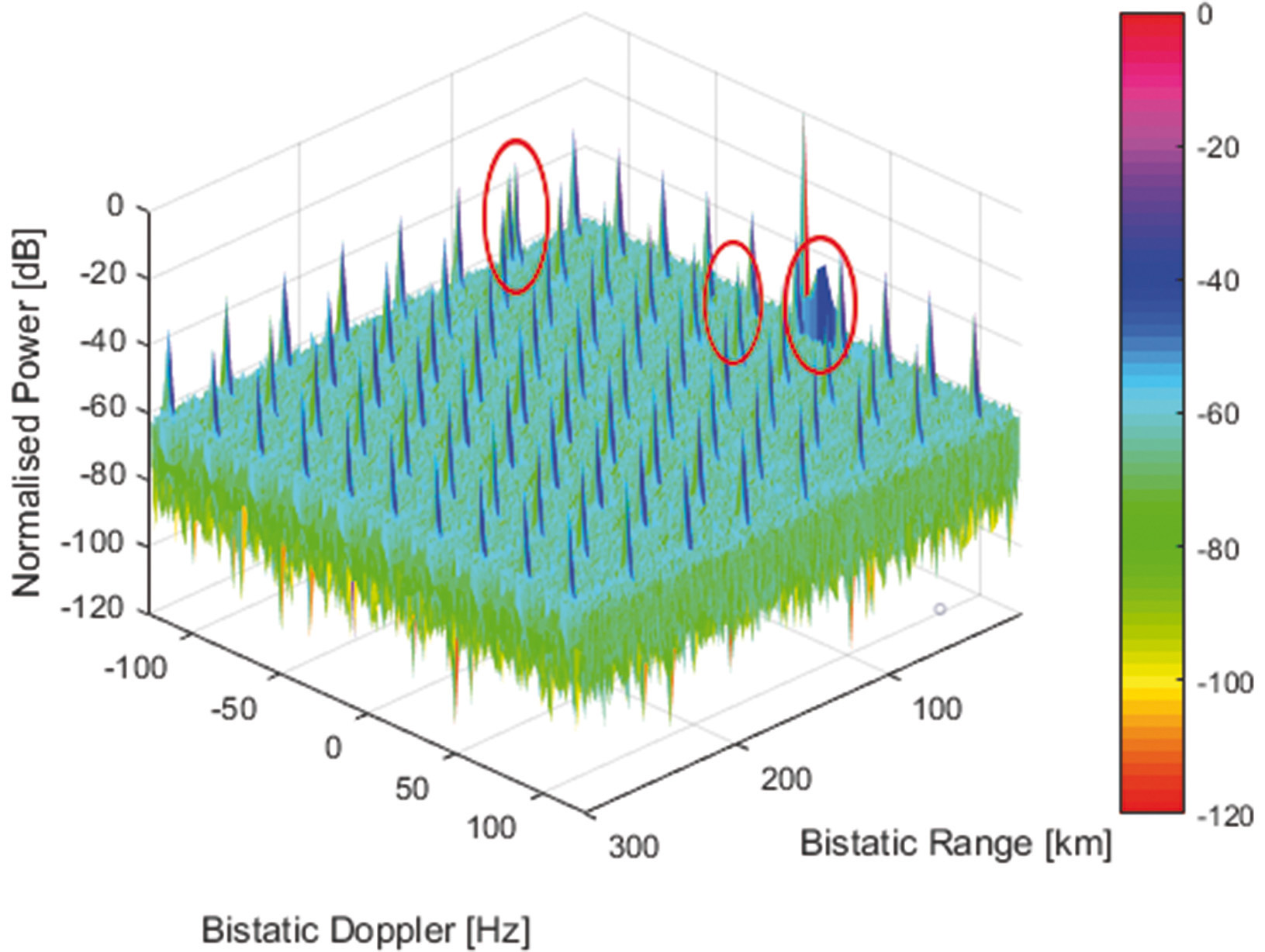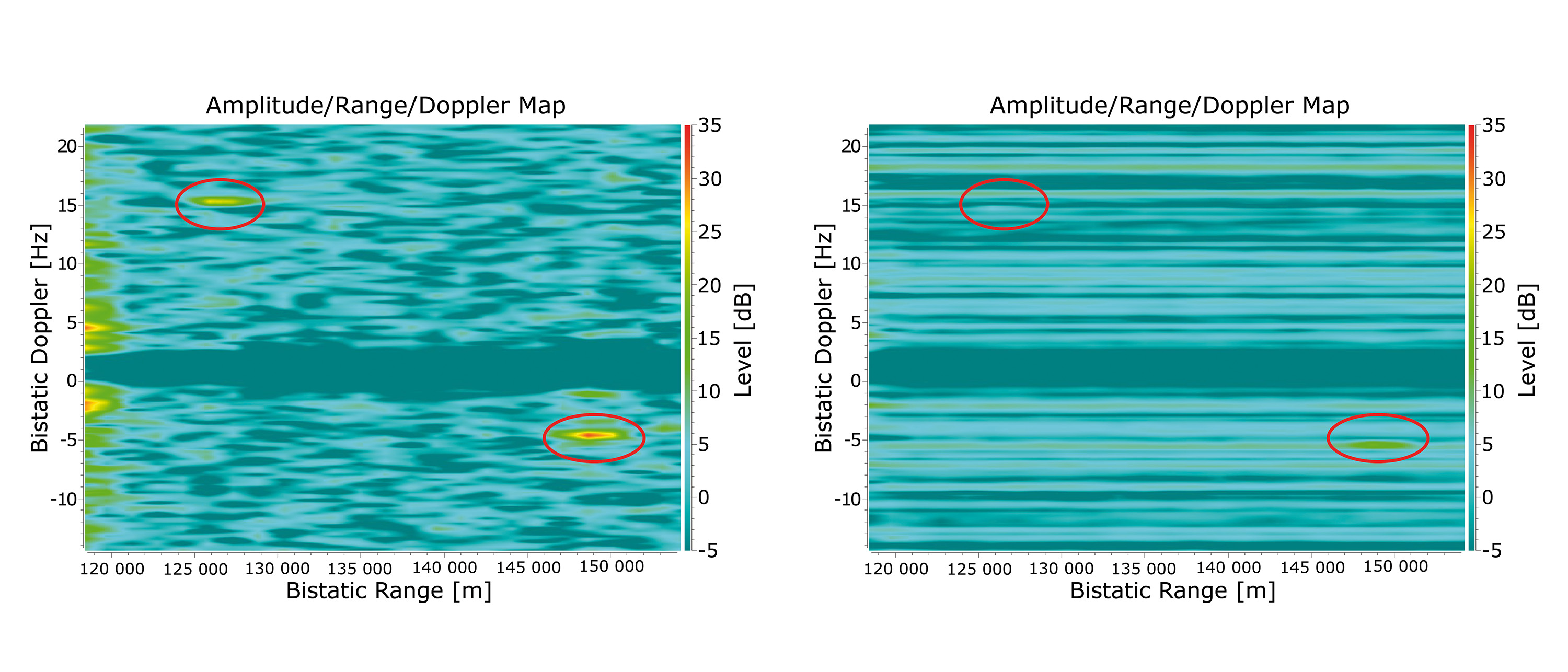Intelligent electronic countermeasures (ECM) against modern radar systems
The initiation of suitable countermeasures against enemy radar presents a major challenge for both symmetric as well as asymmetric conflicts. Over decades, Fraunhofer FHR has developed an enormous expertise in the area of electronic warfare (EW), especially in electronic countermeasures (ECM).



The research and development of »unconventional« radars is progressing at an increasing pace and with this, their use in future threat scenarios is becoming more and more likely. A »conventional« radar features specific technical properties for which there is still no widespread use at present. Besides monostatic, bistatic, and multistatic radars, this includes passive, adaptive-active, and cognitive systems as well as low power radars (LPR), radars with arbitrary or randomizing waveforms (noise radars), and networks of radars.
The scientists at Fraunhofer FHR have outstanding expertise in the development of unconventional radars as well as the corresponding radars for suitable electronic reconnaissance (ESM) and countermeasures (ECM). True to the philosophy »create to learn«, they develop radars such as noise radars, passive radars that use third-party illuminators, static and moving multistatic radars, LPR, multifunctional RF systems, and radar networks. In addition, they possess extensive knowledge of the complexity of intelligent ECM, while always turning their sights to topics relevant for the future and maintaining a close cooperation with national and NATO allies in order to be able to efficiently face complex threat scenarios in the future. The national and international relevance of the research work in the areas of ECM and unconventional radars are demonstrated within the scope of numerous research activities. Representatives of Fraunhofer FHR lead joint NATO and EU research groups concerning the topics of ECM, passive radar on moving platforms, and synchronization of radar networks, among others.
Below, we will present a variety of examples for intelligent ECM against unconventional radars.
ECM Against Passive Radar
Passive radar uses available third-party illuminators such as radio or satellites for target detection, i.e. the transmitter and the receiver are dislocated. Passive radar is tremendously important in the military sector and will likely be a central element in the defense infrastructure of the future. That is why research into suitable ECM is of essential importance. This presents a major challenge, as the position of the receiver is generally not known, and therefore the jamming signal cannot be directed to a specific direction. In cooperation with partners, researchers of Fraunhofer FHR have developed techniques to intelligently jam and deceive passive radars largely independent of their exact position. For example, a radar's detection capabilities can be prevented completely by having the ECM system emit a low power signal (see figure 3). In addition, many passive radars use OFDM-based (orthogonal frequency division multiplex) waveforms. With a differentiated manipulation of the pilot and carrier signals, the target detection can be concealed or a false target can be generated. Figure 2 shows an example for the manipulation of the OFDM carrier signal.
ECM Against Low Probability of Intercept (LPI) Radar
To prevent the detection of one's own platforms by radars with a high time-bandwidth-product (e.g. LPI radars), noise jammers are often ineffective. An optimization can be achieved by utilizing the matched filter gain. For this, a parameter estimation of the radar pulse is performed first by suitable ESM systems. New methods from the »machine learning« field can be used to estimate the signal parameters. For example, to determine the modulation, the time-frequency-representation (e.g. auto ambiguity function) of the receive signal can be calculated. This is then classified by a »convolutional neural network«. The signal parameters obtained from this can be used to interfere with the radar by generating numerous synthetic false targets.
Sophisticated broadband receivers have been developed at FHR to register different threat radars. Figure 1 shows a hardware example.
ECM Against Cognitive Radars
As digital technology progresses, the application of new signal forms or techniques will lead to radar threats changing at an increasingly fast rate in the future. This means that suitable countermeasures will have to be adapted in comparable time frames to ensure their effective applicability. Future systems for electronic warfare will be based on reconfigurable hardware and software so that new radar threats can be detected and characterized during the application. Then effective countermeasures are derived from this with as short of a reaction time as possible. For this purpose, the learning and adaptation process of the now flexible threat library will receive feedback to assess the effectiveness of the measure and to directly adapt and optimize the interference technique to be applied.